1 How to Choose a Healthy and Beautiful Kumquat Tree
Look for a well-shaped tree
Select a tree with a straight and sturdy trunk that appears natural and not forced. Avoid trees that seem weak and fragile.
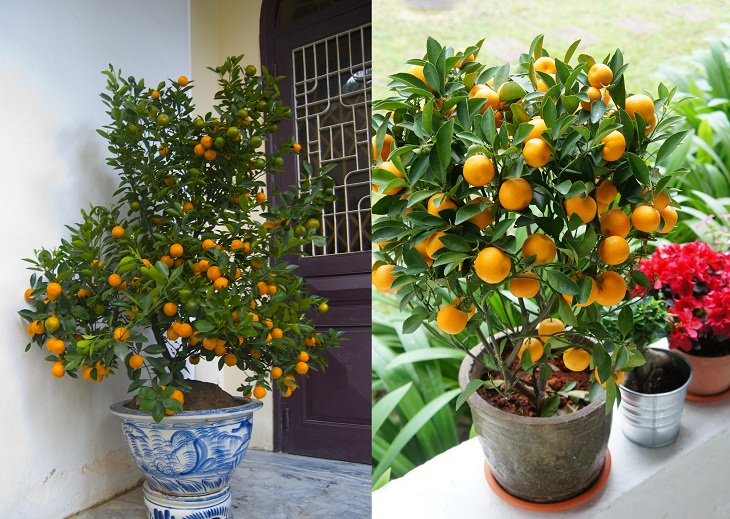
Choose healthy leaves and fruits
Look for large, green, and not too thick kumquat leaves. The fruits should be round and not overcrowded. Avoid trees with small yellow leaves and small fruits, as these may indicate root rot, leading to gradual wilting and death of the tree.
Ideally, the tree should have a mix of green, unripe, and ripe fruits to symbolize the different generations in a harmonious family. Look for a tree with large, glossy leaves, a rounded canopy, and evenly distributed fruits.
Choose a young tree without concentric ring marks or lichens. A tree with a mix of fruits, flowers, and buds will be more durable and meaningful.
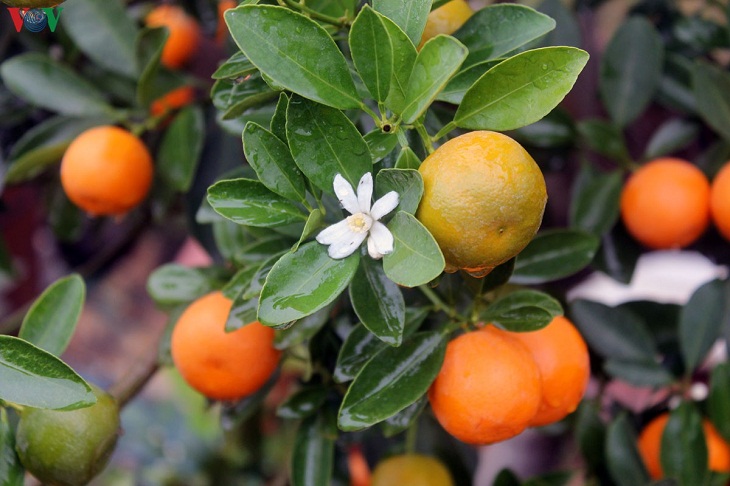
Timing your purchase
It is best to pre-order your kumquat tree from mid-November (lunar calendar) from a nursery. Contact them closer to the New Year to collect your tree, ensuring you get the one you want.
If you cannot pre-order, aim to purchase your tree between the 20th and 25th of the twelfth lunar month. Choose a tree with lush green leaves showing no signs of wilting or leaf fall.
2 Caring for Your Kumquat Tree
Once you’ve bought your tree, it’s time to repot and care for it to ensure its longevity and beauty.
Repotting and transplanting
Before transporting your tree, wrap the root ball and maintain a moisture level of 65% – 80%. Be gentle to avoid breaking the root ball, leaf, or fruit drop.
Use a ceramic or clay pot with a layer of straw or ash at the bottom for better drainage. Place the tree in the center and fill the sides with powdered soil. Top it off with white pebbles, small stones, or sand for aesthetics, and water the plant.

Caring for your tree during the New Year
Even during the busy New Year celebrations, remember to water your tree daily. After the festivities, move your tree outdoors or plant it in the ground to promote its growth for the next New Year.
Use a small sprayer or your hand to moisten the leaves once or twice a day, ensuring the roots are adequately watered. This will keep the leaves fresh and minimize leaf fall after the New Year.
3 Decorating Your Kumquat Tree
Red envelopes: Symbolizing good luck for the new year, hang red envelopes on your tree for a vibrant touch.
Festive couplets and greetings: Hearing New Year wishes will bring excitement and joy, banishing any bad luck from the previous year, and adding to the beauty of your carefully chosen kumquat tree.
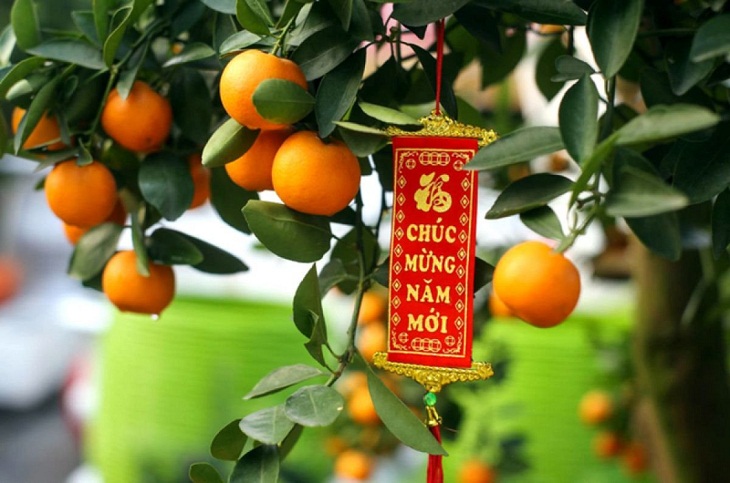
Golden coin strings: Representing wealth and prosperity, hang strings of golden coins in your preferred style.
Small red lanterns: Evoking a strong East Asian aesthetic, red lanterns are a popular New Year decoration. Choose a size that complements your tree.
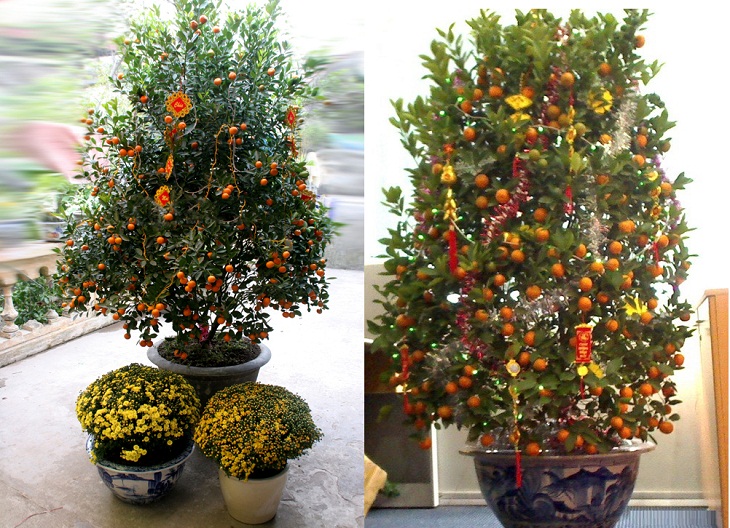
4 Post-New Year Care for Your Kumquat Tree
After the New Year, it is best to plant your tree in the ground for better growth. Ten days before replanting, spray the leaves and roots with a root-promoting product. Before replanting, remove half to a third of the leaves and water the tree.
Prepare a hole with 1-2 kg of bio-organic fertilizer or 3-5 kg of compost. Place the tree in the hole and create a 4-6 meter wide and 20-30 cm deep ridge to prevent waterlogging, which can hinder the tree’s growth.
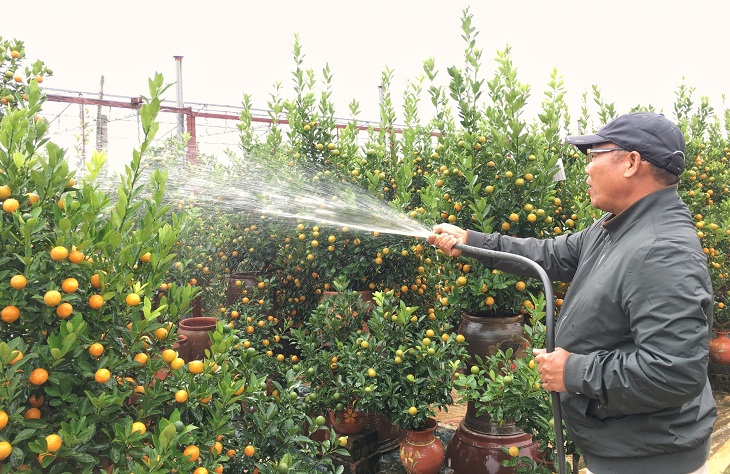
Five to seven days after replanting, loosen the soil around the tree and about 30 cm away from the trunk. Then, water and fertilize the loosened soil (NPK fertilizer or liquid fertilizer) to provide additional nutrients.
Maintain a fertilizing cycle of 15-20 days, using PTS9 micro-fertilizer and ecological garden growth solution to promote the tree’s development and enhance its beauty.
The fertilizer ratio is as follows:
- For young leaves: 5ml/15 liters of water.
- For mature and old leaves: 5ml/10 liters of water.
Shaping your tree
If your tree already has a desirable shape, simply prune the leaves every 7-10 days with a specialized sharp tool to avoid damaging the branches.

Repotting for next year
Around the fifth lunar month, repot your tree to prepare for the next New Year and encourage flowering (dao quat). Before repotting, water the tree sufficiently, then use an iron bar to loosen the soil 60-100 cm from the trunk, creating a 40 cm deep and 20 cm wide trench. Continue pruning the roots until the root ball is 40-60 cm in diameter.
Cut any thick roots (over 1 cm in diameter) that cannot be wrapped around the root ball. For smaller, softer roots, wrap them around the ball and secure them with nylon string. Use the iron bar to cut through any remaining soil and roots at the bottom of the ball before placing it in the new pot.
Controlling fruiting
For a single type of fruit: Keep the newly repotted tree in a shady place, avoiding heavy rain, for 10-20 days until 80-90% of the leaves drop. Then, replant the tree, and it will flower uniformly in July-August, bearing fruit in January-February of the following year.
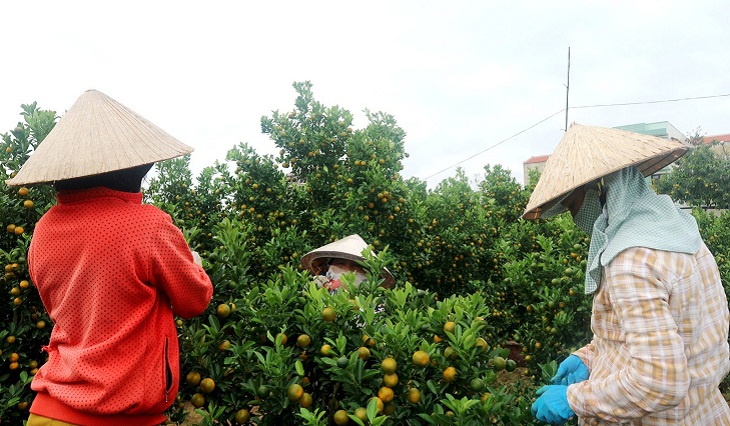
For a mix of buds, ripe and unripe fruits, and flowers: Keep the newly repotted tree in a shady place for 7-10 days until half the leaves drop, then replant. When the first and second batches of flowers are the size of small beans (June-August), remove half the fruits, pluck the young shoots, and fertilize with nitrogen + potassium or growth solution. This will encourage the tree to produce more flowers and shoots, resulting in a mix of ripe, unripe fruits, buds, and flowers by the New Year.
We hope this guide helps you choose and care for a beautiful kumquat tree for the New Year! Please share your experiences and thoughts with us in the comments below!

































